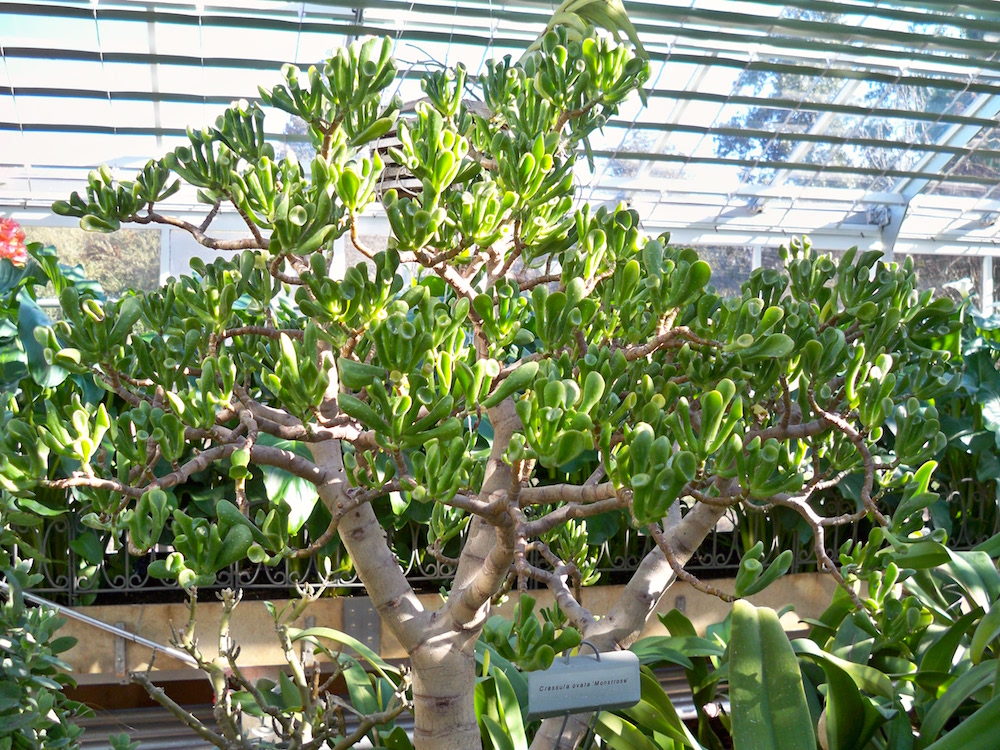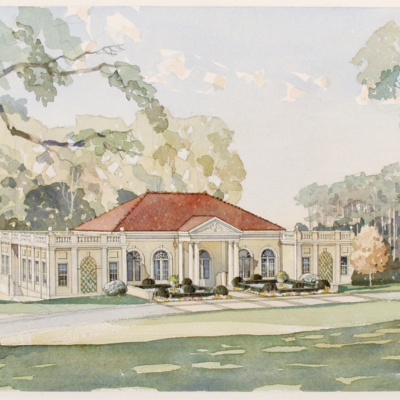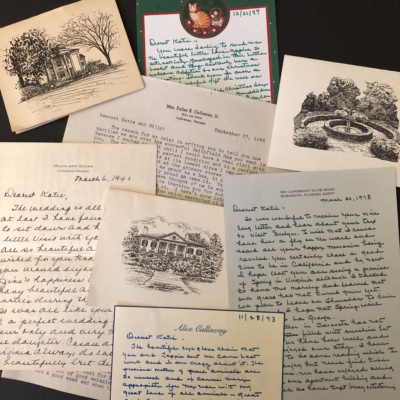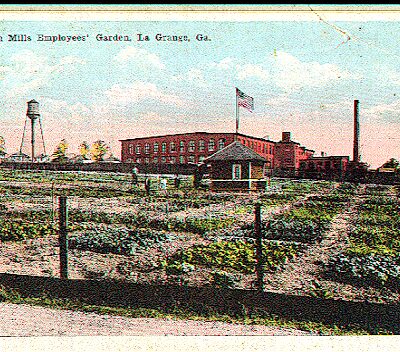The greenhouse at the estate is home to a small collection of succulent plants, the most notable being several species and cultivars of Crassula, or jade plants, because of their long history here. Horticulture manager Jo Phillips, who is in her 21st year of employment in our gardens, recalls hearing stories about the jades over her tenure and has given the following interview to record them as well as her experience caring for these interesting specimens.
“Well first of all, they are some of the most striking potted plants in the greenhouse because of their size, together with their distinct and sometimes bizarre appearance,” she explained. “Guests have always been amazed at the height and girth of the largest ones and frequently inquire about their age. The oldest in the collection is more than likely one Mrs. Alice acquired, although I don’t know how long she had it before I came to work here in 1994. I remember seeing ‘miniature jade’ printed in her neat hand and I immediately noticed the plant’s smaller leaves, trunk and branches. It was the first mini that I had ever seen. I learned they have a slower growth rate than the larger species and will develop a characteristic weeping habit if pruned lightly. We have propagated from it and have younger plants coming along, but we treasure her old one. I estimate that it is at least 25 years old and perhaps older. I had never seen a variegated one or the look-a-like known as ‘elephant food’ either until coming here. The latter looks like another form of mini jade, but they are not even closely related. One other particularly interesting specimen we have that was not part of Mrs. Callaway’s collection is Crassula Ovata ‘gollum’, with tubular leaves and suction cup-like tips that look just like Shrek’s ears!” she laughed.
Already familiar with the culture of the species, Phillips remembers reading up on the others to make sure that she knew how to care for them properly. She found that their culture is really no different than for the more common form—plenty of light and warmth (above 50°, absolutely no freezing), potting soil that drains very well, no fertilizer in the winter but lightly once a month or so otherwise, and allowing the soil to dry out thoroughly to the touch before watering. Naturally, that is a longer span of days in the winter than during warmer months. Like most succulents they thrive on benign neglect as long as they’re not too wet or cold. Great advice, but we were still hoping for another bit of history. “Well, there was also a sizeable jade tree in the greenhouse when I was first employed. That thing was too big to be called a mere plant,” she chuckled. “It was at least three feet tall and the trunk at its widest was nearly four inches in caliper. When I exclaimed over its size, Mrs. Callaway told me about its predecessor, the parent plant that it was rooted from. Originally belonging to her mother-in-law, Ida Cason Callaway, (Mrs. Fuller E. Callaway Sr.) that jade grew to be a magnificent specimen during the 60 years that Alice cared for it. She said that she kept it on the floor in the center section of the greenhouse, which is the shadiest, and shared that this location was frequently met with surprise and well-meaning horticultural ‘advice’ that it would be better suited in a sunnier spot. Although she did not move it as recommended, it continued to thrive in spite of all the concern. Apparently, jades will tolerate light shade in a greenhouse or outside as long as they are not overwatered, although most recommendations are for sun. The old jade of Ida’s sadly met its demise in 1983 when a spring hail storm hit LaGrange and shattered much of the glass on the roof of the greenhouse, which consequently came crashing down on the plants housed inside. There was considerable damage to the garden and to structures all over the estate, but Mrs. Callaway remembered that when she and her husband (Fuller E. Callaway Jr.) went out to survey the destruction, the only thing that he lamented over was ‘mother’s jade,’ as it was called. She recalled that when he saw it his eyes filled with tears. Thankfully, Alice had rooted other plants from it prior to this and had a very nice, although younger, specimen that escaped damage, being safely on display in the house when the storm came. Now the heir apparent, it came back to the greenhouse and was the reigning jade when I was employed eleven years later.”
When Ms. Phillips was asked whether or not that plant was still alive and well, she acknowledged that it too had met with a sad end. “We had something go wrong with the heating system in the greenhouse several winters ago and, to make a long story short, it was in the wrong section at the wrong time and got too chilled. We considered ourselves very fortunate that we only lost the one jade in that event and the rest of the collection came through relatively unscathed. It was a shame that it was that one, though. Such are the vagaries of gardening,” she said ruefully.
Was there another of Ida’s jade progeny to replace it? “Oh yes, of course! Jades are easily propagated from leaf or stem cuttings and there was a very nice one that I guess you could call a ‘grandchild’ or a third generation of Ida’s original plant. It was started not long after I came here, so it is now approaching its 21st year as well. We always try to have young ‘insurance plants’ for as many specimens as feasible coming along. That’s a lesson anyone caring for an old garden should learn as soon as possible!” she acknowledged. “Mrs. Callaway taught me that because sometimes things happen that we can’t control. So we prepare as best we can and always remember her philosophy of ‘patience, perseverance and acceptance’.



